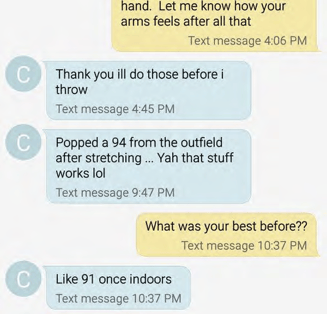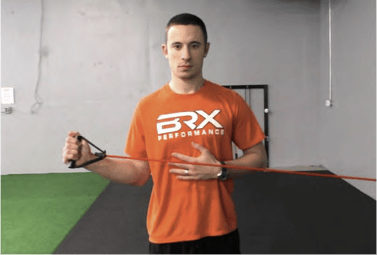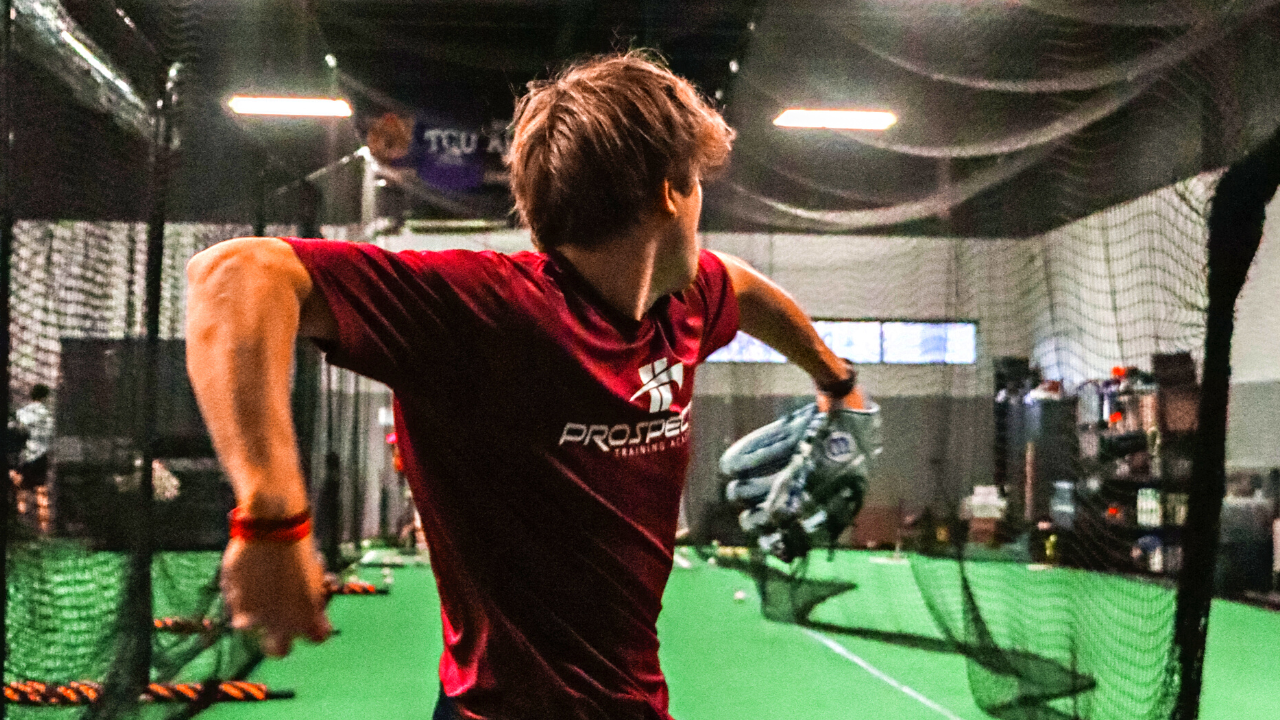"My son has gained 15 pounds but his throwing velocity hasn't gone up."
Baseball players often don't reach their potential because they spend their time training like football players.

Baseball is a sport with unique movements and training demands:
- Maintain Mobility As You Get Stronger
- Utilize Lateral Power Exercises
- Train On One Leg
- Improve Hip And Shoulder Separation
- Train your Rotator Cuff In A 90/90 Position
Most mechanical issues - and lack of velocity - is a direct result of an athlete's mobility or strength. Unfortunately, this is often the area that's poorly implemented with youth baseball training programs.
Here are five exercises that will help increase throwing velocity - one for each of the five pillars mentioned above.
1. Side-Lying Windmill (Maintain Your Mobility)
If you’re skeptical as to whether or not the proper warm-up can have an impact on your showcase performance, check this out:

Your thoracic spine – or upper back - is an enormously important area to have mobility in if you’re a baseball player.
Getting more rotation of the upper back through drills like the Side-lying Windmill, a mobility drill in our BDS Training Program, increases hip-and-shoulder separation, which allows you to generate more torque on rotational movements like throwing and hitting.
Make sure that you are using your upper back to do all the rotation and not the arm itself!
2. Skater Jump w/ Band (Use Lateral Exercises)
Think about the way baseball and softball players move: it's a sport of lateral and rotational motions. Pushing off the mound laterally and rotating in throwing, the lateral stride and rotation of hitting, a base stealing start, the way the body turns laterally in a crow-hop from the outfield, and so on.
Benching, squatting, hang cleans, pull ups, forward lunges, straight-line sprints, foul poles, etc, are all staples of most training programs. There's nothing "wrong" with these exercises, but they're all missing a lateral and rotational component.
Often underutilized in a baseball and softball training programs are things like skater jumps, one of the BDS Program Power Exercises, which mimic the movement baseball and softball athletes use on the field. Power developed on this plane transfers well to the field.
3. Bulgarian Split Squat (Train On One Leg)
On a related note, baseball and softball players are rarely pushing off one leg at a time.

As a result, one-leg strength is incredibly important, and it's not addressed anywhere near as often as two-leg exercises like back squats, cleans, and RDLs.
While there's no such thing as a guaranteed "velocity drill," the Bulgarian Split Squat - one of the pillars of our BDS Strength Program - is about as close as you can possibly get.
4. Kneeling Anti-Rotation Chops (Hip & Shoulder Separation)
Explosive power and torque are incredibly important for rotational athletes and their quest to develop throwing velocity and hitting power. Yet few know how to train it.
The secret? Improve your hip and shoulder separation.
The Kneeling Anti-rotation Chop is a drill that works on all aspects of hip and shoulder separation
- Hip mobility
- Core stability
- Upper back (thoracic spine) rotation
Wondering how our athletes make such incredible velocity improvements while using our BDS Strength Program program? Drills like the Anti-rotation chop that help improve hip and shoulder separation are a huge reason why.
5. Kneeling 1-Arm ER Wall Holds (90/90 Cuff Drills)
Whenever I ask someone to give me an example of a rotator cuff or shoulder exercise, I get this response 90% of the time:

While this isn’t the worst exercise in the world by any means, does it look anywhere close to where your arm is when throwing a baseball? I certainly don’t think so!
Strength achieved at the position above won’t necessarily transfer to the position your arm is in when throwing a baseball. For this reason, you need to train at functional positions – positions you’ll be in when you actually need the strength.
For these reasons and more, 80-90% of the arm care drills in the BDS Strength Program involve the 90/90 position of the elbow and shoulder, which is the spot you’re in on the field when you throw.
Not sure how to complete a particular drill on your program?
Click Get Started buttons on this page to try BDS free for 7 days.
Claim Your Free 7 Days Training Now!

|
